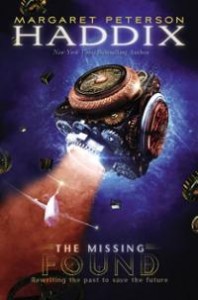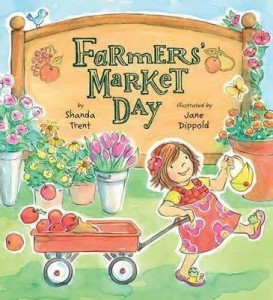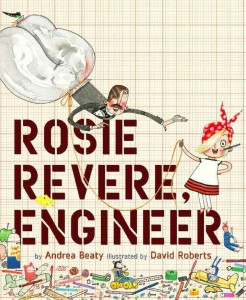Eleanor, Quiet No More
 This morning, I sat basking in the presence of an amazingly talented author. Doreen Rappaport was speaking at our local university, and because my husband, Matt Faulkner, will illustrate her biography of Elizabeth Cady Stanton, Matt and I were able to sit in on her lecture. I’ve been a huge fan of Doreen’s work for years, but hearing her speak made me want to read everything she’s ever written. It reminded me just how powerful it is to hear an author or illustrator in person.
This morning, I sat basking in the presence of an amazingly talented author. Doreen Rappaport was speaking at our local university, and because my husband, Matt Faulkner, will illustrate her biography of Elizabeth Cady Stanton, Matt and I were able to sit in on her lecture. I’ve been a huge fan of Doreen’s work for years, but hearing her speak made me want to read everything she’s ever written. It reminded me just how powerful it is to hear an author or illustrator in person.
Doreen has a series of picture book biographies about famous Americans that perfectly hit that Common Core Standard of Range of Reading for elementary students. I love using her books because her writing style is so engaging that any one of them make for a great Craft & Structure lesson. Take, for example, Eleanor, Quiet No More written by Doreen Rappaport and illustrated by Gary Kelley. Gorgeous, large illustrations accompany the story of Eleanor’s life. Yes, you will find a timeline of her life and key facts to use for writing reports, but more importantly you will get a sense of who this remarkable woman was. Direct quotes are written in huge letters, and discussing why this is can be the beginning of the lesson on author’s craft.
Doreen has video clips of Eleanor Roosevelt and Common Core-aligned study guides with cross-curricular activities on her website, but I think one of the best ways to extend this book is to have your students contact Doreen herself. If you aren’t able to bring her to your school, email her questions, or snail-mail her letters. Allowing your students to personally connect with authors and illustrators will inspire them to appreciate books on an entirely new level. Many authors and illustrators will Skype with students across the country, but check out who lives in your state. Michigan has a list of authors and illustrators available for school visits through the Library of Michigan website. The Society of Children’s Book Writers and Illustrators (SCBWI.org) has a speaker’s list that is searchable by region. All of your students will benefit from hearing an author or an illustrator speak, but for those who dream of making their own books, it may be the spark that lights the next Gary Kelley or Doreen Rappaport.
For more information about the author, please visit doreenrappaport.com.
For more information about the illustrator, please visit garykelleyonline.com.
Read MoreRosie Revere, Engineer
I have the best of reasons for posting late this week: I’ve been on Mackinac Island at the Michigan Reading Association conference, being inspired by dedicated educators and loving the slower pace of an island with no automobiles. Now I’m sitting in a white wicker rocking chair with a cup of coffee and my laptop, dear husband at my side, watching sailboats glide by. The only thing that could make this any better would be a great book, and luckily, I have one.
Rosie Revere, Engineer written by the marvelously talented Andrea Beaty and illustrated by David Roberts is one of the rare rhyming book gems: the story is as solid as the meter and the language isn’t dumbed down in order to make a rhyme. Rosie Revere is the kind of girl most creative people will relate to: joyfully inventive, but so fearful of failure and ridicule that she hides her inventions away. The “gadgets and gizmos” she creates are fantastic, and I love Roberts’ whimsical and yet credible drawings of them. (I myself would love a pair of Rosie’s helium pants.) Rosie’s desire to help her great-great-aunt Rose fulfill her lifelong dream of flying gives Rosie the courage to test one of her inventions.
“The heli-o-cheese-copter sputtered and twitched.
It floated a moment and whirled round and round,
then froze for a heartbeat and crashed to the ground.”
Rosie is devastated by the failure, and by her great-great-aunt’s laughter, until she hears,
“‘Your brilliant first flop was a raging success!
Come on, let’s get busy and on to the next!’“
So not only is the message of this book one that every creative person with perfectionist tendencies needs to hear (I’m keeping it by my bedside table as a reminder) but it has historical notes in it about Amelia Earhart and E. Lillian Todd (the first woman to design airplanes) and Rosie the Riveter and other strong women whose names and deeds should be known. For a social studies lesson, you could easily springboard from this book into studying awesome women inventors. For math-science-art, get graph paper and a bunch of doodads and thing-a-ma-bobs for students to plan, design, build, test, and refine their own inventions. If you ask people to donate old, broken electronic gadgets to your class and bring in small tools, your students can take apart old radios and remote controls to disassemble and use. Build those Phonological Awareness skills by focusing on the rhyme, then discuss the interesting word choices for a Craft & Structure lesson. To keep rocking those Core Standards in Reading, you can easily work in Integrating Knowledge & Ideas by comparing Rosie Revere, Engineer to Iggy Peck, Architect by the same power duo.
So share this book with absolutely everyone you know, and get busy taking creative risks, because
“Life might have its failures, but this was not it.
The only true failure can come if you quit.”
For more information on the author, please visit andreabeaty.com.
For more information on the illustrator, please visit davidrobertsillustration.com.
Celebrate America with “Seed by Seed”
 What better way to celebrate the Fourth of July than with a slice of apple pie and a beautiful picture book about an American legend? Seed by Seed: the Legend and Legacy of John “Appleseed” Chapman written by Esme Raji Codell and illustrated by Lynne Rae Perkins is one of the most thought-full biographies I’ve read. Codell and Perkins invite children to leave behind the world of concrete, cars, and screens, and enter a time when one man made a huge impact on our country, seed by seed.
What better way to celebrate the Fourth of July than with a slice of apple pie and a beautiful picture book about an American legend? Seed by Seed: the Legend and Legacy of John “Appleseed” Chapman written by Esme Raji Codell and illustrated by Lynne Rae Perkins is one of the most thought-full biographies I’ve read. Codell and Perkins invite children to leave behind the world of concrete, cars, and screens, and enter a time when one man made a huge impact on our country, seed by seed.
John Chapman, or Johnny Appleseed, planted so many seeds across America that chances are the apples you eat are descendents of his trees. His legend of humble generosity is a story every child should know. I love the five examples Johnny Appleseed planted that we can follow:
“Use what you have.
Share what you have.
Respect nature.
Try to make peace where there is war.
You can reach your destination by taking small steps.”
And I just want to hug the book every time I read the end:
“Seed by seed, deed by deed,
Johnny Appleseed changed the landscape of a nation.
And now it’s your turn.
One small deed, every day.
What seed will you plant?”
Pick this book to use in your classroom as a biography, as part of a unit on apples, in an American legends unit. Codell, who knows what works in the classroom (remember the terrific book about a teacher’s first year called Educating Esme? That’s her!) has great ideas in the back of the book, including a recipe for apple pie. There’s also a fantastic free teacher’s guide on harpercollins.com. I’d have students help me make a yummy apple treat to share as we discuss the five examples of Johnny Appleseed. Connecting what Johnny did in his life to each of those ideas will be a good Common Core Key Ideas & Details lesson (plus you can put a checkmark next to Range of Reading). You can talk with your students about putting these examples into place in your classroom. Seed by Seed could inspire your students to plant seeds of kindness, and those seeds could spread through your school, your community, your nation. That is as wonderful and American as apple pie.
Have a happy Fourth of July!
For more information about the author, please visit planetesme.com.
For more information about the illustrator, please visit lynnerae.com.
All the Water in the World
 Summer in Michigan means swimming in lakes, running through sprinklers, diving into pools. It’s a good time of year to share All the Water in the World by George Ella Lyon and Katherine Tillotson.
Summer in Michigan means swimming in lakes, running through sprinklers, diving into pools. It’s a good time of year to share All the Water in the World by George Ella Lyon and Katherine Tillotson.
Science, poetry, and art swirl together in this gorgeous picture book.
“That rain
that cascaded from clouds
and meandered down mountains,
that wavered over waterfalls
then slipped into rivers
and opened into oceans,
that rain has been here before.”
All the water in the world is all the water this world will ever have, so it’s our responsibility to keep this precious resource clean. George Ella Lyon has a free teacher’s guide on her website: georgellalyon.com with plenty of extension activities. I think it’s cool to recreate the water cycle with your students by putting hot water and a glass in a clear bowl, and covering the bowl with plastic cling wrap so they can see evaporation and condensation (for a much better explanation, go to easy-science-experiments.com). Talk about the lyrical language Lyon chose as well as the facts of the water cycle and you’ll hit the Core Standards of Craft & Structure plus Key Ideas & Details (love the two-fer!) Pay homage to Tillotson’s flowing art by pulling out the watercolors to illustrate the water cycle or why water is so important. And if it’s as hot where you are as it is in Michigan, get out the sprinklers as well!
Read More
A Little Book of Sloth
 For me, summer reading is all about slowing down, relaxing, and reading for pleasure. To help you unwind, I’m sharing this irresistible book, A Little Book of Sloth by Lucy Cooke. Flip through the pages and just try not to squeal at all the sleepy-cute faces and snuggly, furry bellies.
For me, summer reading is all about slowing down, relaxing, and reading for pleasure. To help you unwind, I’m sharing this irresistible book, A Little Book of Sloth by Lucy Cooke. Flip through the pages and just try not to squeal at all the sleepy-cute faces and snuggly, furry bellies.
This is a non-fiction picture book about Slothville, a sanctuary for orphaned and injured sloths in Costa Rica. Baby sloths cling to their mothers for the first year of their lives, so little orphans each get a special stuffed animal to hug. All the snuggling and relaxing in the shade and hanging out make me think that I need to spend more time being sloth-like.
Share A Little Book of Sloth with students first for the pure pleasure of learning about these easy-going mammals. Take your time and enjoy the photos and the “who knew?!” facts. You’re hitting the Core Standards of Range of Reading with the age-appropriate non-fiction, and the author’s high-level vocabulary makes this an easy lesson on Craft & Structure (what is a “Xenarthran”? You’ll find out in this book!)
After reading, visit Lucy Cooke’s website www.slothville.com where you can watch videos of the sloths at the sanctuary. My favorite video teaches how caregivers at the sanctuary potty-train baby sloths. Enjoy A Little Book of Sloth and take a page from the sloth’s book: slow down, enjoy hanging out, and spend lots of time hugging.
Read MoreHow I “Found” Out How to Keep my ‘Tween Reading
 My daughter has been a voracious reader since birth, but my son – not so much. Joe reads well, but rarely would he pick up a book for pleasure. It wasn’t until I paid more attention to how he learns that I found how to hook my 12-year-old son on reading.
My daughter has been a voracious reader since birth, but my son – not so much. Joe reads well, but rarely would he pick up a book for pleasure. It wasn’t until I paid more attention to how he learns that I found how to hook my 12-year-old son on reading.
Joe is very social and he learns best when he’s talking about his process with someone else (in multiple intelligences lingo, he’s an Interpersonal learner, or People Smart.) Reading by himself doesn’t interest him much. When he was little I read aloud to him every night, but I made the mistake of stopping this bedtime ritual once he could read well independently. Not surprisingly, his reading dropped off.
Then I was lucky enough to hear Margaret Peterson Haddix speak at a conference. She described her book Found, the first in a series called The Missing. I knew Joe would love the exciting plot. I checked out Found from the library and booktalked it to my son. He seemed interested, and yet it still sat. Then I suggested I read aloud the first chapter to him at bedtime.
Joe and I curled up on his bed to read, and within a few paragraphs, he was hooked on the story. When I put the book down, he immediately picked it up and kept reading. The next night, Joe wanted me to read more, and he couldn’t wait to tell me what he’d read from the point where I’d stopped. Together we’ve flown through the first book and we’re onto book 2, me reading a bit aloud, Joe reading on his own, and Joe filling in the gaps for me.
So this week, rather than recommend a specific picture book, I’m recommending my favorite reading technique. If you have a reluctant reader, try curling up and reading a book aloud to him or her. Make it purely for pleasure. You may find you are both hooked.
Read MoreFarmers’ Market Day
 I am counting the days until my local farmers’ market opens. Until then, I’m glad I found this perfect pick: Farmers’ Market Day written by debut picture-book author Shanda Trent and illustrated by Jane Dippold. This rhyming book is a quick read that can easily be turned into an interactive “imagination” station or a fun math center for students to practice counting money.
I am counting the days until my local farmers’ market opens. Until then, I’m glad I found this perfect pick: Farmers’ Market Day written by debut picture-book author Shanda Trent and illustrated by Jane Dippold. This rhyming book is a quick read that can easily be turned into an interactive “imagination” station or a fun math center for students to practice counting money.
A little girl and her family go to the farmers’ market on Saturday. The little girl has her own money from her piggy bank and she’s not sure what to buy – maybe a basket of cherries, a jar of honey, freshly-baked bread or flowers for the garden? Each enticing item is labeled with a price tag, like $2.00, or 12/$3.00, or 50 cents. Reading aloud this short rhyming book will have your little listeners eager to choose what they’d buy for themselves, and that’s where you can extend the book in ways to draw your students back to rereading.
Younger students can make their own farmers’ market in a pretend-play area. Plastic fruits, vegetables, and flowers can be bought and sold. Students can use Farmers’ Market Day to decide what should be for sale and how much to write on each price tag. (Using the information found in both the text and the pictures is a way of Integrating Knowledge and Ideas. Woohoo!) Older students can use the book to practice money skills. Ears of corn cost $3.00 per dozen – how many ears of corn do you need to feed your class, and how much will it cost? If you have $10.00, what items would you buy? Show your shopping list! With summer and real live farmers’ markets just around the corner, Farmers’ Market Day is a real treat.
Read More







